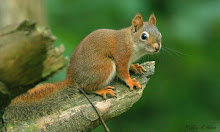This year, we decided to visit Myakka River State Park, only 40 minutes away. Myakka River State Park is one of the oldest and largest state parks in Florida. The Myakka River flows through 58 square miles of diverse terrain. A most wonderful day was spent viewing an abundance of wildlife (especially birds!) and beautiful scenic landscapes. We observed at least 34 species of birds, eight American Alligators (two mating) and one furtive Florida Water Snake. I was thrilled to add two life birds to my list, as we spotted a few well camouflaged Wilson's Snipes and four elegant Black-necked Stilts.
This post features several of the stunning birds seen at the park ... and one BIG alligator.
A resplendent Tricolored Heron exhibits interesting fishing behavior
This lovely Sandhill Crane pair was one of several we observed at the park
A slender Greater Yellowlegs darts for prey in the shallows
An elegant Great Egret walks amid a lush bed of water hyacinth
I gasped when I saw this Great Blue Heron land in close proximity to the basking alligator. The scaly large-mouthed reptile showed no interest and a minute or two later slowly slid into the water.
The Wood Stork's diet consists of crayfish, crabs, fish, frogs and large insects. I find the prehistoric look of the Wood Storks bald head to be so very interesting.
Many solitary Glossy Ibis were seen feeding throughout the park. I recently read that these birds will without hesitation, indulge in eating water snakes.
The stunning blue plumage of a Little Blue Heron
We were thrilled to spot over 40 Roseate Spoonbills at the park. Most were congregated at a remote area of Upper Myakka Lake. This is not the greatest photograph, but I was elated to catch sight of the blushing bird in flight.
A beautiful White Ibis exhibits a mucky beak from probing in the mud for food
A Great Blue Heron and Wood Stork cross paths while seeking sustenance
Soon after the above photograph was taken, this American Alligator lumbered into the water and swam after another alligator, perhaps 300 feet away. The rapid chase continued for a few minutes until they both slowed down, swam side by side and proceeded to mate.
~ The average male American Alligator is 10-15 feet long and weighs 500-600 pounds ~

























































